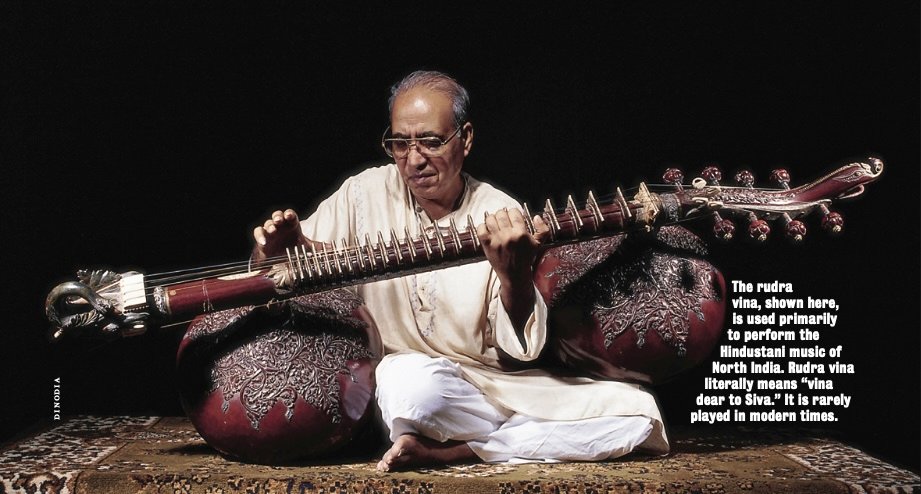Music has always held a central place in Indian culture, serving as a vital component of religious and spiritual practices. From the chants of ancient Vedic hymns to the devotional bhajans sung in temples, music is intertwined with the spiritual fabric of Indian life. This article explores the multifaceted role of music in Indian religious and spiritual practices, examining its significance across different traditions and its impact on worship, meditation, and spiritual expression.
Music in Hindu Religious Practices
1. Vedic Chants and Hymns
Overview: Vedic chants, or “Vedic recitations,” are among the oldest forms of music in Hinduism. These hymns, composed in Sanskrit and sung during rituals, play a crucial role in the Vedic tradition.
Significance:
- Ritualistic Functions: Vedic chants are used in rituals and ceremonies to invoke divine blessings and maintain cosmic order.
- Spiritual Elevation: The rhythmic and melodic aspects of these chants are believed to help practitioners achieve spiritual upliftment and mental clarity.
Examples:
- “Gayatri Mantra”: A revered mantra from the Rigveda, often chanted during meditation and prayer.
- “Sama Veda Chants”: Ancient chants from the Sama Veda, used in Vedic rituals and ceremonies.

2. Bhajans and Kirtans
Overview: Bhajans and kirtans are devotional songs that express love and devotion to deities. They are commonly performed in temples, during festivals, and in personal worship.
Significance:
- Devotional Expression: These songs are a means for devotees to express their devotion, love, and reverence towards deities.
- Community Engagement: Bhajans and kirtans foster a sense of community and collective worship, often involving congregational singing and participation.
Examples:
- “Rama Bhajans”: Devotional songs dedicated to Lord Rama, often sung during Ram Navami celebrations.
- “Vaishnava Kirtans”: Chants dedicated to Lord Krishna, popular in the Gaudiya Vaishnavism tradition.
3. Classical Music in Temples
Overview: Indian classical music, both Hindustani and Carnatic, has a significant presence in temple worship and rituals.
Significance:
- Enhancing Rituals: Classical music is used to enhance the ambiance of temple rituals and ceremonies, creating a sacred atmosphere.
- Spiritual Resonance: The complex melodies and rhythms are believed to resonate with the divine and elevate the spiritual experience.
Examples:
- “Venkateswara Suprabhatam”: A morning devotional hymn sung at the Tirumala Venkateswara Temple.
- “Narayana Teertha’s Kritis”: Compositions by Narayana Teertha, often performed in Carnatic music concerts dedicated to Lord Krishna.
Music in Buddhism
1. Chanting and Mantras
Overview: Chanting and the recitation of mantras are integral to Buddhist practice. These practices are used to cultivate mindfulness, focus, and spiritual insight.
Significance:
- Mindfulness and Concentration: Chanting helps practitioners develop concentration and mindfulness, essential aspects of Buddhist meditation.
- Spiritual Benefits: The recitation of mantras is believed to invoke spiritual blessings and connect practitioners with the divine.
Examples:
- “Om Mani Padme Hum”: A powerful mantra associated with compassion and the bodhisattva Avalokiteshvara.
- “Heart Sutra Chant”: A chant of the Heart Sutra, emphasizing wisdom and emptiness.
2. Traditional Buddhist Music
Overview: Traditional Buddhist music includes a variety of instrumental and vocal practices, used in rituals, ceremonies, and meditation.
Significance:
- Ritualistic Purpose: Music is used in ceremonies to create a conducive environment for spiritual practices and to honor the Buddha and other deities.
- Meditative Qualities: The soothing and repetitive nature of traditional Buddhist music aids in meditation and relaxation.
Examples:
- “Tibetan Singing Bowls”: Instruments used in Tibetan Buddhism for healing and meditation.
- “Japanese Gagaku”: Ancient court music used in Shinto and Buddhist ceremonies in Japan.
Music in Jainism
1. Devotional Songs and Hymns
Overview: Jain devotional music includes songs and hymns that reflect the teachings of Jainism and express devotion to Tirthankaras (spiritual teachers).
Significance:
- Religious Expression: These songs are used in temples and during religious festivals to express devotion and reverence.
- Spiritual Reflection: The music encourages reflection on Jain principles and values, such as non-violence and self-discipline.
Examples:
- “Bhaktamar Stotra”: A devotional hymn dedicated to Lord Adinatha, the first Tirthankara.
- “Shri Vardhaman Stotra”: Hymns praising Lord Mahavir, the 24th Tirthankara.
Music in Sikhism
1. Kirtan
Overview: Kirtan is the practice of singing hymns from the Guru Granth Sahib, the holy scripture of Sikhism. It is an essential aspect of Sikh worship and community gatherings.
Significance:
- Spiritual Upliftment: Kirtan is believed to bring spiritual enlightenment and connect devotees with the divine.
- Community Bonding: The communal aspect of kirtan fosters a sense of unity and collective devotion among Sikhs.
Examples:
- “Waheguru Simran”: Chanting the name of Waheguru, the supreme God, as part of devotional practice.
- “Japji Sahib”: The recitation of Japji Sahib, a central prayer in Sikhism, during Gurdwara services.
Music and Spiritual Practices: Common Themes
**1. Meditative Qualities
In many Indian religious and spiritual traditions, music is used to facilitate meditation and create a serene environment conducive to spiritual practice. The repetitive and rhythmic aspects of music help practitioners focus their minds and attain a state of calm.
**2. Ritualistic Functions
Music plays a crucial role in rituals and ceremonies, enhancing the spiritual atmosphere and assisting in the performance of religious rites. Whether through chanting, hymns, or instrumental music, the auditory experience is integral to the ritualistic process.
**3. Community and Devotional Expression
Music fosters community engagement and collective worship. In many traditions, communal singing and devotional music bring people together, creating a shared spiritual experience and reinforcing communal bonds.
Conclusion
The role of music in Indian religious and spiritual practices is profound and multifaceted. From ancient Vedic chants to contemporary devotional songs, music serves as a vital element in worship, meditation, and spiritual expression. Its ability to enhance rituals, foster community, and facilitate spiritual practices underscores its importance in the religious and spiritual life of India. As a universal language, music continues to play a central role in connecting individuals with the divine and enriching their spiritual journeys.

